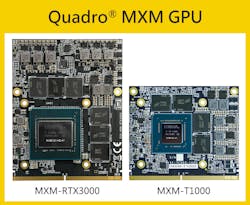A new year brings new embedded technologies with innovations in microcontrollers, SoCs, clock generators, and systems designed for AI applications. The latest generation of embedded systems encompasses a wide range of industries and applications, including autonomous vehicles, medical devices, robotics and more. In this roundup, we will take a look at the latest embedded technologies to hit the market in 2021.
New Open Flashloader can Program any RISC-V System
SEGGER recently released its new Open Flashloader that allows engineers to program any RISC-V system, which fits into just 2 kB of RAM. This provides J-Link debug probes the ability to download directly and into the flash memory of RISC-V microcontrollers or SoCs. It also provides a solution for mass production programming using the Flasher series of programmers. The Open Flashloader works with any software supporting J-Link, including simple command-line programs such as J-Link Commander, GDB or SEGGER's Ozone debuggers, production-oriented utilities such as JFlash, and development tools such as Embedded Studio.
Silicon Labs recently introduced its new SmartClockTM features to its series of AEC-Q100 qualified Si5332-AM clock generators, which actively monitor reference clocks to detect potential faults and provides built-in clock redundancy. If a fault condition is detected, SmartClockTM then transmits this data to external system microcontrollers or safety managers, instructing the chip to switch to a backup source for continued operation. The Si5332-AM can be configured using Silicon's ClockBuilder Pro software, which assigns a custom part number for each user configuration. Devices ordered with custom part numbers are factory-programmed, making it easy to get a custom clock tailored for each application. The device may be user-configured via I2C at power-up or internally-configured NVM programmed with new configurations using the ClockBuilder Pro Field Program.
Quadro MXM GPU Boards Pack Additional GPU Capacity
Cincoze has expanded its GM-1000 machine vision line modules with a pair of Quadro MXM GPU boards. The new MXM-RTX3000 and MXM-T1000 pack the additional GPU capacity for rapid adoption of machine vision in smart factories, which provide environmental perception applications such as positioning, measurement, identification, and more. Both MXM GPU modules use the latest NVIDIA Quadro Turing GPU architecture based on the latest 12nm process. The MXM-RTX3000 packs 1920 CUDA cores, 5.3 TFLOPS peak FP32 high-end computing power, parallel integer execution, AI computing Tensor core, and specialized RT cores for ray tracing. The MXM-T1000 offers 896 CUDA cores, 2.6 TFLOPS peak FP32 computing power and only 50W power consumption for power-conscious high-speed computing.
Both models support GDDR6 memory, with the MXM-RTX3000 featuring a single card capacity of up to 6 GB and 336 GB/s memory bandwidth, while the MXM-T1000 has 4 GB capacity and 192 GB/s memory bandwidth. Both modules also have different form factors, with the MXM-RTX3000 sporting an MXM 3.1 Type B form factor, while the MXM-T1000 has a Type A form factor.
ADLINK Technology recently launched its DLAP x86 series of deep learning acceleration platforms for AI edge deployment in industrial applications. The DLAP x86 series is optimized to deliver AI performance in industry applications by accelerating compute-intensive, memory-hungry AI inferencing and learning tasks. The series features heterogeneous architecture for high performance using Intel processors and NVIDIA's Turing GPU architecture, which provides higher GPU-accelerated computation with optimized power performance. The DLAP x86 series features a rugged design for reliability and can sustain temperatures up to 500C with 240 watts of heat dissipation, strong vibrations (up to 2 Grms) and shock (up to 30 Grms) making them suitable in industrial, manufacturing and healthcare environments.
Seeger recently rolled out its SystemView analysis tool for RISC-V embedded systems, which uses J-Link and SEGGER's Real-Time Transfer (RTT) technology, IP, and UART for visualization and real-time recording. The platform can capture tasks, interrupts, timers, resources, API calls, and user events, complete with an analysis overview. Events are retrieved from the target, analyzed and visualized in the SystemView application while the target keeps running. The Events Window in SystemView displays the recorded events and more information within an intuitive GUI that is easy to navigate. Displayed data includes API function name, values, parameters, and target, recording, and system time.






